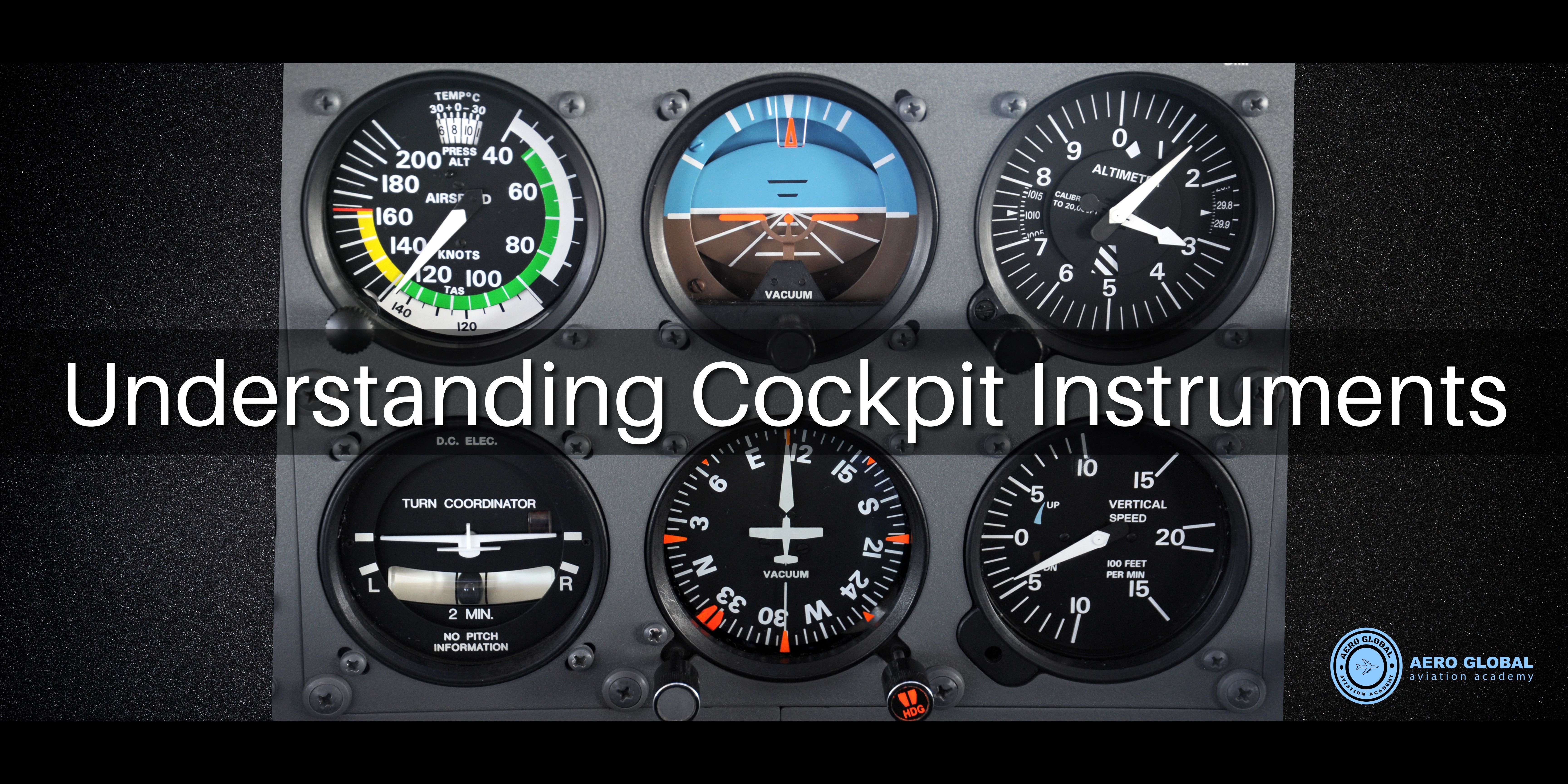4009 Fifth St,
Suite 103, Kissimmee, FL 34741
321-270-9900

A pilot's ability to interpret cockpit instruments is crucial for safe and efficient flight operations. Whether you’re a student pilot beginning your training at Aero Global Aviation Academy or an aviation enthusiast, understanding these essential instruments will enhance your flying knowledge. Let’s explore the key cockpit instruments and their functions.
The traditional cockpit includes six essential instruments, commonly referred to as the “six-pack.” These provide critical flight data and situational awareness.
For cross-country and IFR (Instrument Flight Rules) flights, navigation instruments are vital for precision and accuracy.
Pilots must also monitor their aircraft’s performance to ensure safe operations.
Modern aircraft feature Electronic Flight Instrument Systems (EFIS) or glass cockpits, replacing traditional analog gauges with digital screens.
At Aero Global Aviation Academy, we ensure our students gain hands-on experience with cockpit instruments through both ground school and in-flight training. Whether flying a Cessna 150, Cessna 172 or Piper Warrior, our aircraft are equipped with the necessary instruments to prepare you for real-world piloting.
Understanding and mastering cockpit instruments is an essential step in becoming a confident and skilled pilot. Whether flying with traditional analog gauges or modern glass cockpits, these instruments are your primary tools for safe navigation and control.
Ready to take the next step in your aviation journey? Book a discovery flight today at Aero Global Aviation Academy and experience the thrill of flying firsthand!
For more insights and expert flight training, contact us today and take the next step toward your aviation career!